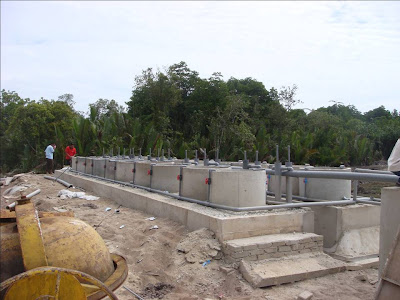




Asuhan kerapu liar (kerapu Hijau/ E. Sullius) sedang dijalankan (Mulai 4 Mac sehingga 15 April) dengan menggunakan tangki HDPE berjaya memperolehi hasil 75 % Survival Rate (SR) pada minggu ke 2, jauh lebih baik dibandingkan asuhan secara semi statik yang hanya didalam linkungan 10-20 % sahaja. 19000 ekor ikan diisi kedalam tangki asuhan HDPE bersaiz 5O0 liter setiap satu secara berperingkat-peringkat. Kadar stocking awal per tangki adalah 5000 ekor per tangki dan pada minggu kedua 2500-3000 dan 1200-1500 pada minggu ketiga dan kekal sedemikian sehingga percubaan berakhir. Makanan yang diberikan adalah Love Larva (55% CP)pada minggu pertama, diikuti Chuan Sen (50% CP) minggu ke dua dan ACIAR (43% CP; no 2, 3 dan 4).
Tujuan utama percubaan ini adalah untuk menyediakan standard piawai protokol (SOP) bagi mengendalikan CENTS-HDPE ini bagi tujuan komersial. Kos sistem ini adalah dalam lingkugan modal RM 25000 - RM 30,000.

































